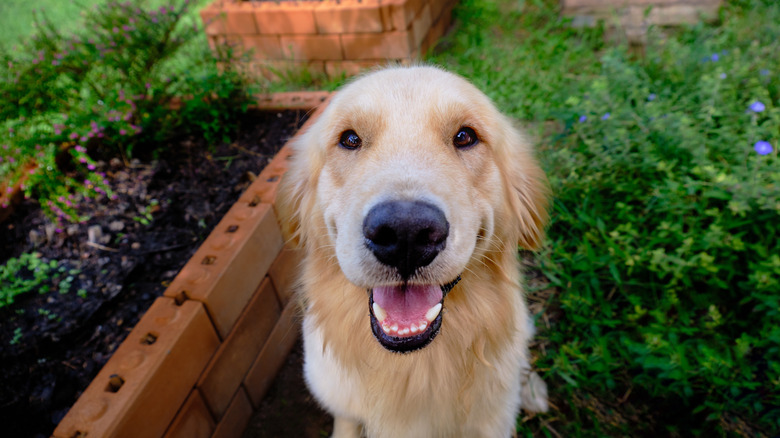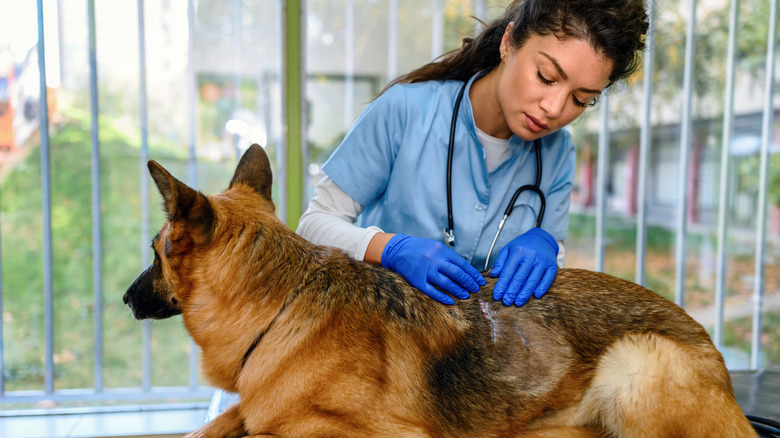Adorable Dog Breeds Most Likely To Get Hot Spots
Though it happens mostly in the summer, dogs can get hot spots, also known as moist dermatitis, all year round. Aside from its nickname and technical name, you may be wondering what defines a hot spot. These spots are caused by inflammation, which causes the area to feel "hot" to the touch. Hot spots are skin irritations that look like open wounds, often oozing pus or other debris — and can certainly be painful for your pup.
This can sound very scary as it can be rather unpleasant for your furry friend due to the pain and itchiness hot spots cause. If you have a long-haired dog, they may also be more prone to them due to their thick coats. For some breeds, like Newfoundlands, Saint Bernards, Golden Retrievers, Akitas, and German Shepherds, hot spots are a big problem. Their thick coats with a secondary undercoat make these unpleasant lesions difficult to prevent and observe. While thick coats may make it harder to spot a lesion, there are a few things you can do to help keep your dog's skin looking healthy and happy.
Spotting and treating hot spots in long-haired breeds
Just because you have an adorable long-haired dog doesn't mean they're destined to get hot spots. It's important to prevent problems to the coat outright, such as preventing parasites and reducing skin-irritating allergies. Common causes of hot spots include parasites like fleas and allergies. Regular grooming, bathing, and brushing can help you spot any fleas holding onto your dog's coat as well as areas of skin irritation that may need extra care.
Since they're called "hot" spots, you may think that hot spots can be prevented by water. However, this can be a detriment to long-haired pups because their fur may not properly dry, making the problem worse. Because of this, you may have to assist in the drying process to prevent hot spots from developing. Towels work well, but it's best to avoid grooming mistakes like brushing at the wrong time to ensure your pup's coat dries fully.
If you do notice a hot spot forming on your dog's skin — don't despair. A trip to the vet is the best course of action to take. Your vet can prescribe any topical or oral medications as needed to help reduce inflammation and treat any secondary infections. In addition, they can help clean up the patch so that your dog feels some relief. Lastly, your vet may recommend some diet changes or other lifestyle changes that can help keep your hot spot-prone breed from developing any more.

